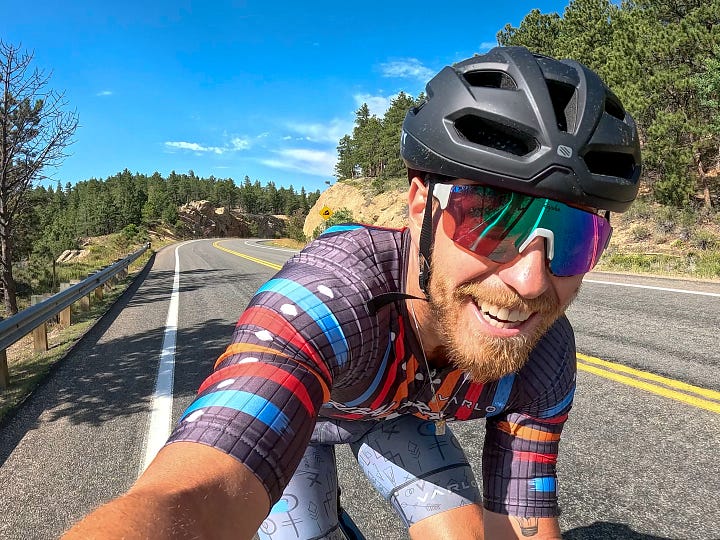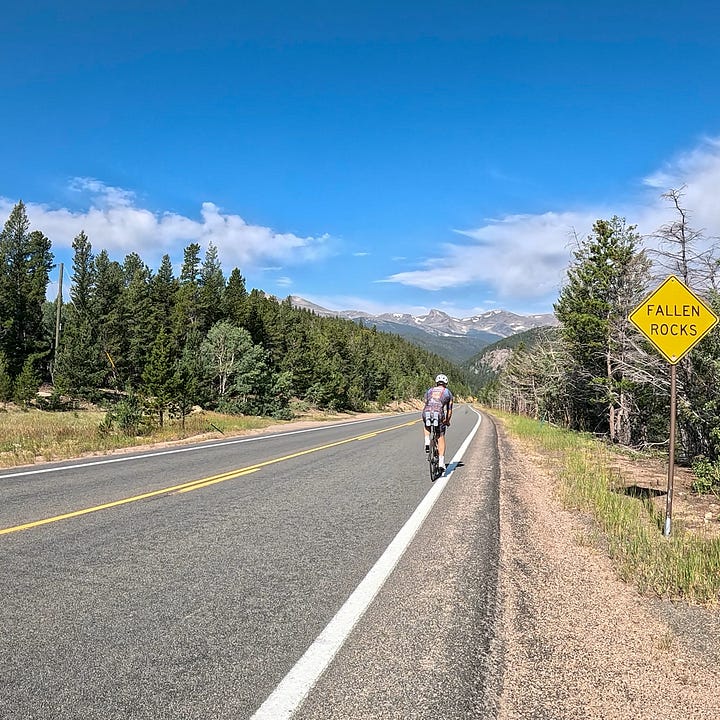I had 12 weeks until Ironman World Champs. But only 7 that actually looked fully open for Ironman training.
And so I leaned on one of the most useful planning tools in long-course endurance training:
The mini block.
In Episode 2 of my Ironman World Champs Prep Series on YouTube, I broke down the simple strategy I use to build smarter, more adaptable training blocks.
Instead of praying for a perfect 12-week progression, I look for focused 3–4 week windows where I can:
narrow my focus on training
execute high quality sessions
maintain harmony across life
Here’s how I structured my most recent 3-week block for Ironman World Championships prep.
And how you might apply this framework to your own training.
The Block Planning Approach
Before building the plan with my coach, I looked at my calendar and noted:
travel
family plans
business responsibilities
I saw two clear blocks of time in the 12 weeks leading into the race:
Block 1: 3 Weeks
Block 2: 4 Weeks
Rather than view my prep as a rigid 12-week grind, I chose to anchor my race build around these two mini blocks.
This let me go all-in during weeks when life allowed it.
And gave me breathing room in the time outside those blocks.
What I Focus On in a Block
In each block, I look to progress four main elements.
These are the 4 things to change if you want to make any workout more challenging:
Interval duration (time spent “on”)
Set duration (continuous working time)
Total work (time in the target zone)
Session volume (duration of the full session)
Progressing those four things (not just blindly adding miles) is what builds race-specific fitness.
What The Program Looked Like
Week 1: Ronnestad Intervals (Short Force Repeats)
3 x [10 x 20 sec Z5 / 40 sec recovery] w/ 5 min recovery between sets
Focus: Top-end force production and neuromuscular recruitment
Total Work: 30 minutes threshold HR
Session Volume: 90 minutes
Runs This Week: 3x Z2 runs, 1x 90 min long run with 6x 30 sec hill repeats
Week 2: Sprint Triathlon (Real World Best Effort Test)
750 meter swim, 17-mile bike, 5k run at threshold effort
Focus: Continuous threshold output under real conditions
Total Work: ~40 minutes (on the bike)
Session Volume: ~1h 20m
Runs This Week: 2x Z2 runs, 1x threshold 5k effort in race @ 6:32 pace
Week 3: Over/Unders (Sustained Speed + Durability)
2 x 20 min [1 min Z5 / 3 min Z3] continuous w/ 5 min recovery between sets
30-minute Z2 run off the bike
Focus: Force production under fatigue, lactate clearance, and sustained speed
Total Work: 40 minutes threshold
Session Volume: ~3h 30m
Runs This Week: 2x Z2 runs, 1x track workout (10 x 400) @ 5:20 pace
Note: these are separate from my long, course prep climbing rides
Week 1: ~6 hours, 7k gain
Week 3: ~5 Hours, 6k gain


Why This Block Looked the Way It Did
This wasn’t a generic progression. It was built to address my specific development needs as an athlete.
I came into this build fresh off running a 50K ultra and the Leadville Trail Marathon.
Those blocks were run-heavy, and my bike training during that time was low intensity.
So my goal was to:
Rebuild neuromuscular sharpness with Z5 power intervals
Close the gap between my strong 70.3 power and what’s required to ride well in a full Ironman (past race data shows my Ironman bike power is weak relative to 70.3 distance)
Build strength for the long, hilly course in Nice (8,000+ ft of gain)
The clear emphasis of Block 1 was the bike:
Re-establish top-end power
Progress into sustained threshold work
Build race-specific climbing durability
But this block wasn’t just about setting peak power numbers…
It was about targeted adaptation, based on:
my training coming into the build
my specific development needs
the demands I’ll face on race day
Understanding The Progression
This interval bike progression focused on Z5 Power and Z4 Heart Rate.
20 second Z5 Power intervals —> 1 minute
10 minute Z4 HR sets —> 20 minute Z4 HR
90 minute session —> 3 hours, 30 minutes
Recovery Time within interval set, and between sets, was reduced
Even though run was not the focus, it followed a similar progression.
KEY NOTE: Resist the urge to make this linear
What’s important is that elements of each workout are getting more challenging and layered on week over week.
It’s not a perfectly linear progression.
For example:
Week 2: 40 minute continuous threshold effort (race, no rest)
Week 3: 40 minute broken threshold effort (2x 20 minute sets, 5 minute recovery).
BUT… Week 3 had 12 minutes in Z5/Z6 power. Week 2 had less than 5 minutes in that range.
(Data pulled from Training Peaks)
Progress comes from changing the stimulus while keeping the quality high.
The Results: Power Data and Takeaways
Looking at the numbers across all three key sessions, something interesting jumps out:
Week 1 – Ronnestad Intervals:
40-minute total time | 284 Norm. Power
Week 2 – Sprint Triathlon:
40 minutes total time | 263 Norm. Power, plus a 5K PR off the bike (20:44)
Week 3 – Over Unders:
45-minute total time | 281 Norm. Power, with strong overall NP across the 3-hour ride (232W)
They’re all in the same ballpark.
40 to 45 minutes
~260 to ~280 power
But that’s missing the point…
The progress is in the variety of how those efforts were produced.
Short and punchy (Week 1)
Continuous and real-world (Week 2)
Sustained surges with Zone 3 settles (Week 3)
Same output. Extremely different pathways.
That’s what builds a more well-rounded, adaptable, and durable rider athlete.
Which ultimately makes me faster overall, especially deep into the race.
I’m also seeing a steady power bump in my Zone 2 rides, which tells me the base is rising too.
But remember…
It’s not about “winning” any single workout.
It’s about stacking high-quality efforts, absorbing the load, and continuing to show up and recover well.
Why This Matters for You
If you’re training for a race while navigating family, career, or travel, don’t chase perfect progressions over practicality.
And don’t assume ambitious goals need to take over your whole life.
Instead:
Zoom out
Identify your real training windows
Build varied progressions inside those blocks
Communicate with your family
Stay flexible
You’ll be surprised how much you can build when you structure around what actually gets done.
Want to Go Deeper?
Block 1 didn’t just make me stronger…
It made me more confident in how I train inside real life.
And I’m documenting this entire Ironman prep on YouTube.
You’ll see the actual workouts, training footage, and behind-the-scenes insights and reflections that don’t always make it into these posts.
Watch Episode 2 here:



